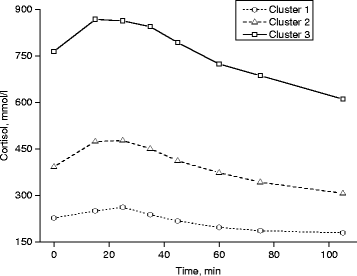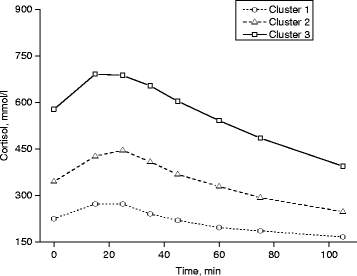A low cortisol response to stress is associated with musculoskeletal pain combined with increased pain sensitivity in young adults: a longitudinal cohort study
- PMID: 26654189
- PMCID: PMC4674918
- DOI: 10.1186/s13075-015-0875-z
A low cortisol response to stress is associated with musculoskeletal pain combined with increased pain sensitivity in young adults: a longitudinal cohort study
Abstract
Background: In this study, we investigated whether an abnormal hypothalamic-pituitary-adrenal (HPA) axis response to psychosocial stress at 18 years of age is associated with musculoskeletal (MS) pain alone and MS pain combined with increased pain sensitivity at 22 years of age.
Methods: The study sample included 805 participants from the Western Australian Pregnancy Cohort (Raine) Study who participated in the Trier Social Stress Test (TSST) at age 18 years. Number of pain sites, pain duration, pain intensity and pain frequency were assessed at age 22 to measure severity of MS pain. Cold and pressure pain thresholds were determined at age 22. Group-based trajectory modeling was applied to establish cortisol response patterns based on the TSST. Logistic regression was used to study the association of TSST patterns with MS pain alone and MS pain combined with increased cold or pressure pain sensitivity, adjusted for relevant confounding factors. All analyses were stratified by sex.
Results: The mean (standard deviation) age during the TSST was 18.3 (0.3) years, and during MS pain assessment it was 22.2 (0.6). Forty-five percent of the participants were female. Three cortisol response patterns were identified, with cluster 1 (34 % of females, 21 % of males) reflecting hyporesponse, cluster 2 (47 %, 54 %) reflecting intermediate response and cluster 3 (18 %, 24 %) reflecting hyperresponse of the HPA axis. MS pain was reported by 42 % of females and 33 % of males at age 22 years. Compared with females in cluster 2, females in cluster 1 had an increased likelihood of having any MS pain (odds ratio 2.3, 95 % confidence interval 1.0-5.0) and more severe MS pain (2.8, 1.1-6.8) if their cold pain threshold was above the median. In addition, females in cluster 1 had an increased likelihood (3.5, 1.3-9.7) of having more severe MS pain if their pressure pain threshold was below the median. No statistically significant associations were observed in males.
Conclusions: This study suggests that a hyporesponsive HPA axis at age 18 years is associated with MS pain at 22 years in young females with increased pain sensitivity.
Figures
References
-
- Crettaz B, Marziniak M, Willeke P, Young P, Hellhammer D, Stumpf A, et al. Stress-induced allodynia–evidence of increased pain sensitivity in healthy humans and patients with chronic pain after experimentally induced psychosocial stress. PLoS One. 2013;8:e69460. doi: 10.1371/journal.pone.0069460. - DOI - PMC - PubMed
Publication types
MeSH terms
Substances
Grants and funding
LinkOut - more resources
Full Text Sources
Other Literature Sources
Medical



